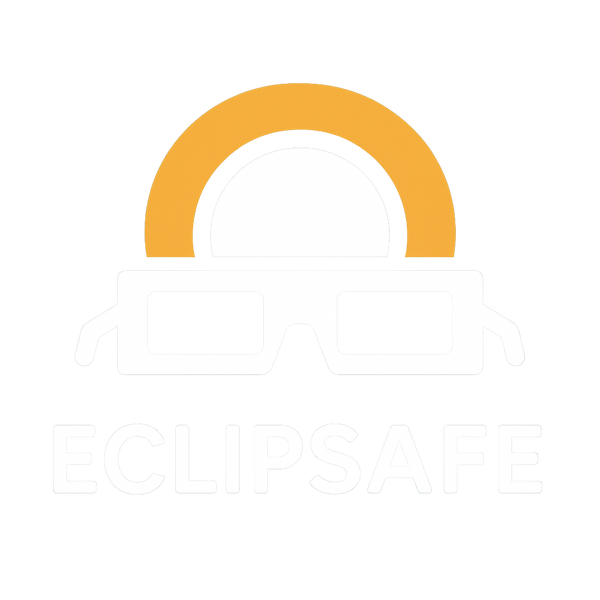
Essential guide to safe eclipse viewing (Spain 2026–2027–2028)
Share
To observe the sun, you need ISO 12312-2 certified filters (regular sunglasses won't work), plan your time and place, and keep a checklist . Below, we'll give you everything, step by step.
Why this article?
In 2026 and 2027, Spain will experience highly anticipated solar eclipses. Millions of people will look up... and that's where we want to help you. At EclipseSafe, we're driven by a simple idea: enjoy the spectacle safely and with information everyone can understand.
1) The eclipse in 60 seconds (no technicalities)
- Solar eclipse : the Moon is placed between the Sun and the Earth
- Partial vs. Totality : During totality , the day darkens for a few minutes, like at sunset; before and after, the Sun remains dangerous to the naked eye.
-
Indicative dates : In 2026 , the northern peninsula will have the best observation point; in 2027 , the focus will be on the south and around the Strait. There will be partial phases in the rest of the country.
👉 Check the exact visibility of your city on official maps (e.g., NASA/IGN) and plan ahead.
2) Golden rule: eye safety
- Only view the Sun with ISO 12312-2 certified solar filters (eclipse glasses or approved viewers).
- Never with normal sunglasses, x-rays, smoked glass, CDs, etc.
- Children : continuous adult supervision and correct adjustment of glasses.
- Telescopes/Binoculars : These require specific filters on the lens. Eclipse glasses do not protect optical equipment.
If during totality (when the Sun is 100% covered) you are told that it can be seen with the naked eye, remember: as soon as the first edge of light reappears, the glasses come back on .
3) How to choose your eclipse glasses (easy and jargon-free)
The 3C rule of Eclipsafe : Certification – Care – Convenience
- Certification: Visible “ ISO 12312-2 ” mark, Manufacturer/batch information, Clear instructions for use.
- Caution: No scratches, dents, or translucent areas. Store in an envelope or opaque sleeve away from extreme heat. If damaged, do not use.
- Comfort: Adjustable for children/adults and ear loops if necessary. Wide field of view and stable nose bridge for extended sessions.
Do they last through multiple eclipses? Yes, if they're kept undamaged and protected from extreme light/temperature. Always check them before using them again.
4) Your preparation plan (timeline “T-30 → T-0”)
T-30 days:
- Choose city/spot and check local visibility.
- Buy your glasses on time (avoid last-minute rush).
- Subscribe to email alerts for reminders and maps.
- Prepare a plan B for clouds and a simple kit (water, cap, sunscreen, wipes).
T-7 days:
- Check exact times of initial and maximum contact.
- Check the condition of your glasses and cell phone/camera if you are going to take pictures.
T-0 (day of the eclipse):
- Arrive early; choose a spot with no obstacles facing the sun.
- Rule of thumb by hand (see section 2).
- Enjoy; share the experience without losing security.
5) Photograph the eclipse with your mobile phone (without scares)
- Lens filter : Just like your eyes, your camera needs a sun filter.
- Do not look through optical viewfinders (SLR cameras) without a filter on the lens.
- Use a tripod or prop yourself up to avoid shaking.
- Try manual focus and low exposure; the sky changes very quickly.
- During totality , if applicable in your area, you can remove the filter to capture the corona… and put it back on instantly when the light reappears.
6) Printable “D-Day” Checklist
- ISO 12312-2 glasses checked and undamaged
- Camera/telescope filter (if applicable)
- Local eclipse times saved on your mobile
- Location with clear horizon
- Protection: cap, water, sunscreen
-
Plan B for clouds and meeting point
Want the checklist in PDF format ? Let us know in the comments and we'll email it to you for free.
7) “Eclipse-Ready” Test (1 minute)
Add 1 point for each “yes”:
- I know what time it starts in my city.
- I have ISO 12312-2 glasses for everyone who goes.
- I have read how to review and save them.
- I know what to do if I want to take photos.
- I have a cloudy plan B.
- Someone is in charge of supervising the little ones.
Result:
- 0–2: There's still time to prepare!
- 3–4: Almost ready, review the checklist.
- 5–6: Eclipse-Ready. 🌘
8) Frequently Asked Questions (FAQ)
Do regular sunglasses work?
No. They do not block enough visible, UV, or IR light to view the Sun.
What if I wear prescription glasses?
Wear eclipse glasses over your prescription glasses.
Can I share my glasses?
Yes, if they're in good condition. It prevents them from getting scratched when you wipe them.
How do I know if they are damaged?
Against the light you shouldn't see anything except the Sun. Any light areas, scratches or dents = discard them .
